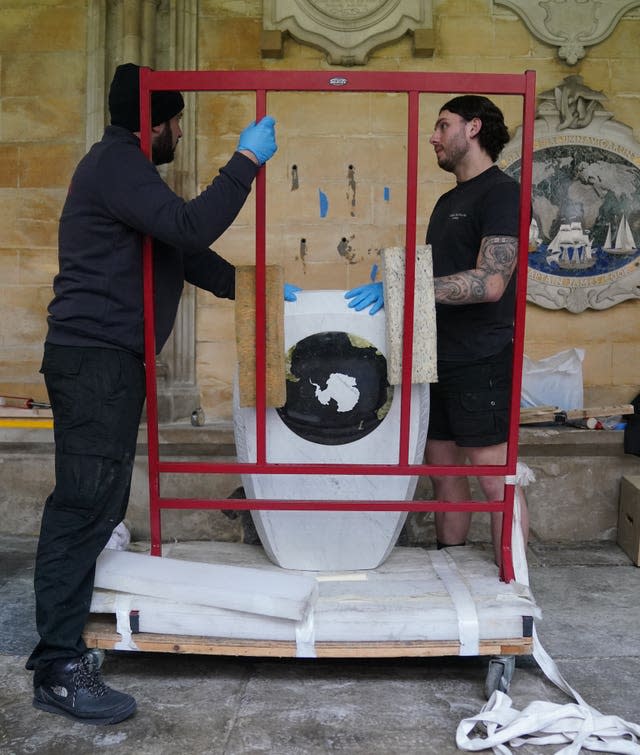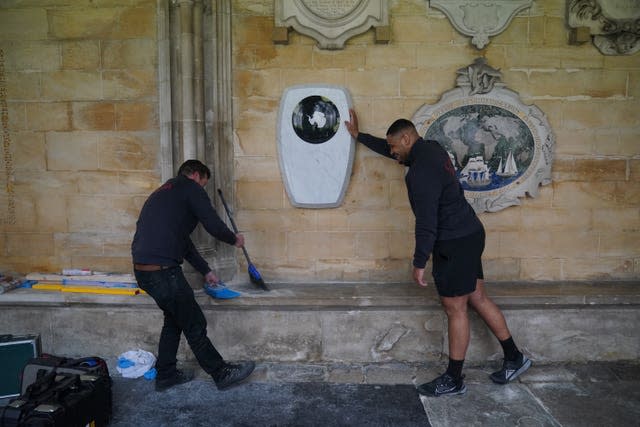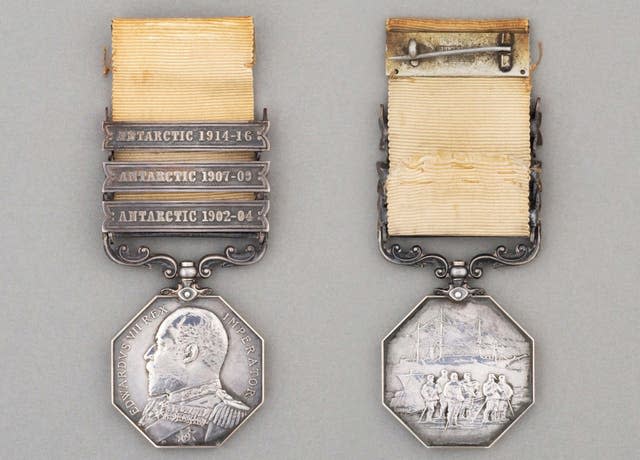Antarctic explorer Sir Ernest Shackleton to be remembered at Westminster Abbey
Antarctic explorer Sir Ernest Shackleton will be honoured through the dedication of a memorial stone at Westminster Abbey next week.
The Dean of Westminster, David Hoyle, said the dedication on Thursday would help sustain Shackleton’s “legacy of wonder”.
The stone will be located in the Abbey’s south cloister, close to a memorial to pioneering sailors Captain James Cook, Sir Francis Chichester and Sir Francis Drake.

Shackleton, who led three British expeditions to the Antarctic, had helped create a “new excitement about science” and a “deeper reverence for the world in which we live”, according to the Very Reverend Hoyle, who will dedicate the memorial.
He added: “Shackleton’s name conjures up a little bit of an old and familiar narrative about a great man with remarkable courage and resilience. That is true but it does not do justice to his achievement.
“Shackleton was more than an explorer, he was a storyteller.
“A pioneer in photography and film and an inspiring speaker, he planted the idea and image of the Antarctic in our imaginations.”

The memorial was made by sculptor Will Davies, who incorporated stones including Connemara marble and Kilkenny limestone to reflect Shackleton’s Irish heritage – he was born in Kilkea, County Kildare, in 1874.
It is also inscribed with the names of Shackleton’s expedition ships and his family motto, fortitudine vincimus – by endurance we conquer.
Shackleton’s first experience of the polar regions was as third officer on Captain Robert Falcon Scott’s Discovery expedition of 1901–1904, from which he was sent home early on health grounds.
In 1907, his Nimrod expedition aimed to be the first to reach the South Pole and although this was not achieved, it was the first expedition in history to travel within 100 miles of the South Pole and successfully ascend Mount Erebus, Antarctica’s second highest volcano.

Shackleton’s Imperial Trans-Antarctic Expedition of 1914-1917 hoped to achieve the first land crossing of Antarctica from the Weddell Sea via the South Pole to the Ross Sea.
The expedition’s ship, Endurance, became stuck in pack ice and sank in the Weddell Sea in 1915, and was lost until it was located by a British-led expedition in 2022, months after the 100th anniversary of Shackleton’s death.
The survival of Shackleton’s crew despite the sinking of Endurance highlighted his exceptional leadership, Westminster Abbey said.
During his lifetime, Shackleton was awarded the Polar Medal and is remembered as one of the key figures associated with the period known as the Heroic Age of Antarctic Exploration.
Last week, it was reported that Shackleton’s Polar Medal will leave the UK unless a domestic buyer is willing to pay roughly £1.76 million.
An export bar has been placed on the silver badge, which the Government says is the last of Shackleton’s medals still in the UK.
Arts and heritage minister Lord Parkinson of Whitley Bay made the bar on the advice of the Reviewing Committee on the Export of Works of Art and Objects of Cultural Interest, which found it should remain in the UK because of its “outstanding significance”.


